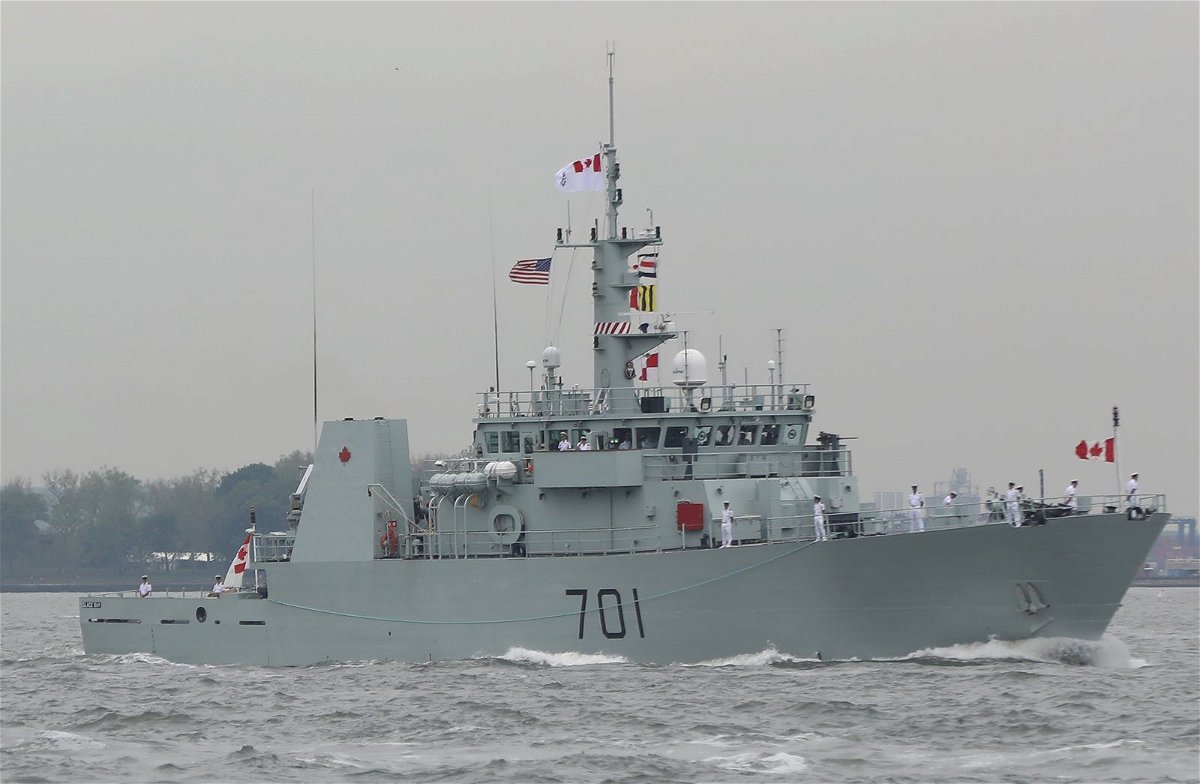These 5 vessels are key to the search for the Titan submersible

The HMCS Glace Bay
By Brad Lendon, CNN
(CNN) — Marine authorities are racing against the clock to get resources in place to find and retrieve the Titan submersible, which lost contact with its mother ship during a dive to the wreck of the Titanic deep below the North Atlantic on Sunday.
Life support on the missing sub is expected to dwindle soon for the five people onboard, about 96 hours after its deployment.
Here are five key vessels involved in the search effort, either on the scene or on the way, according to the US and Canadian coast guards:
• CCGS John Cabot: The 207-foot Canadian Coast Guard offshore fishery science vessel, carries “advanced deep sonar,” according to the Canadian Coast Guard. Sonar uses sound wave echoes to find objects or map features of the ocean.
• Motor Vessel Horizon Arctic: The Canadian 307-foot anchor handling vessel has a hangar for remotely operated vehicles (ROVs) with a launch and recovery system. Sean Leet, co-founder and chairman of its owner, Horizon Maritime Services, said it has been loaded with an ROV supplied by the US military and is expected at the Titanic wreck site on Thursday.
• Research Vessel L’Atalante: This French, 279-foot multipurpose research vessel carries the Victor 6000, an ROV that can dive to almost 20,000 feet. (The Titanic wreck is at almost 13,000 feet.) Victor 6000 can perform tasks including video and acoustic search and inspection and has robotic arms that can manipulate objects, according to the ship’s operator, French Oceanographic Fleet.
• HMCS Glace Bay: A Canadian Navy 181-foot coastal defense vessel, it carries medical personnel and a mobile decompression chamber, which could be needed for any survivors brought up from the depth of the Titanic.
• Magellan ROV: A remotely operated vehicle from deep-sea mapping company Magellan, which operates submersibles that can reach more than 19,000 feet. Magellan, based in Guernsey in the British Isles, is best known for its imagery of the Titanic.
One other key piece of equipment in any rescue could be the US Navy’s Flyaway Deep Ocean Salvage System (FADOSS). Operating like a winch, it is capable of retrieving objects or vessels from the ocean floor up to a depth of 20,000 feet, more than enough to reach the wreckage of the Titanic.
But before the FADOSS system can be used, it must be welded to the deck of a ship, a process that can take a full day.
A US official said Wednesday the Navy was trying to find and contract a ship that could carry the FADOSS.
The-CNN-Wire
™ & © 2023 Cable News Network, Inc., a Warner Bros. Discovery Company. All rights reserved.
CNN’s Oren Liebermann contributed to this report.